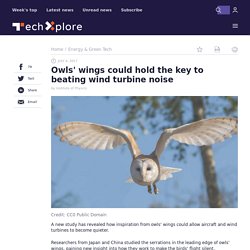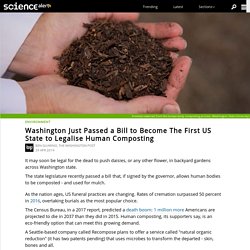

Series 1 Episode 5 Bionic People. Animal-inspired whiskers key to new navigation technology. Researchers have developed artificial whiskers that allow robots to "see" the surroundings in dark and murky places by analysing the way the whiskers respond to water and air flow.

Many animals rely on their whiskers to paint a picture of their surrounding environment when vision or hearing is limited. For example, rats get a sense of their surrounding environment by brushing their whiskers against surfaces. Seals can judge water current conditions by how water flows through their whiskers. In a recently published study in the IOP Publishing journal Bioinspiration and Biomimetics, researchers from Singapore and the U.S. describe a whisker array they developed using five super-elastic metal alloy wires covered in plastic straws.
A strain gauge located at the bottom of the array records any movement the whiskers make. Currently, the whiskers developed in this study can only form two-dimensional images. Owls' wings could hold the key to beating wind turbine noise. A new study has revealed how inspiration from owls' wings could allow aircraft and wind turbines to become quieter.

Researchers from Japan and China studied the serrations in the leading edge of owls' wings, gaining new insight into how they work to make the birds' flight silent. Their results, published today in the journal Bioinspiration and Biomimetics, point towards potential mechanisms for noise suppression in wind turbines, aircraft, multi-rotor drones and other machines. Lead author Professor Hao Liu, from Chiba University, Japan, said: "Owls are known for silent flight, owing to their unique wing features, which are normally characterised by leading-edge serrations, trailing-edge fringes and velvet-like surfaces.
"We wanted to understand how these features affect aerodynamic force production and noise reduction, and whether they could be applied elsewhere. " Is this safest place in the world? BBC News. Ancient Ice Has Revealed The CO2 Cycle of Earth Going Back Nearly 2 Million Years. After more than two years of analysis, the oldest complete ice core has served up a reliable snapshot of our planet's atmosphere from nearly 2 million years ago.

And the results are not what many expected. We know that roughly 1 million years ago, the cycle of Earth's ice ages suddenly shifted, with deeper and longer freezes occurring only every 100,000 years, instead of once every 40,000 years. Nothing in our planet's orbit could explain the 'abrupt' change, known as the Mid-Pleistocene transition (MPT), and with few other explanations, some hypothesised there must have been a long-term decline in atmospheric CO2 concentrations, cooling the planet to a new threshold. Ancient air bubbles trapped in the Antarctic ice sheet have now revealed a somewhat different picture. "One of the important results of this study is to show that carbon dioxide is linked to temperature in this earlier time period," says atmospheric scientist Ed Brook from Oregon State University. Here's What Tree Planting Can Actually Do For The Climate, According to Science. On Tuesday, Elon Musk pledged to donate $1 million to the #TeamTrees campaign started by the YouTuber Jimmy Donaldson (also known as MrBeast).The campaign hopes to plant 20 million trees "in a variety of forests on public and private lands in areas of great need" worldwide.

Each dollar donated is equivalent to one tree.Twitter CEO Jack Dorsey donated 150,000 trees to the campaign. The #TeamTrees website says "forest restoration has the most global climate mitigation potential compared to all other natural climate solutions. "But planting trees is not the best way to address climate change, according to some scientists. Keeping carbon in the ground and reducing greenhouse-gas emissions are equally, if not more, imperative. Visit Business Insider's homepage for more stories. Elon Musk has pledged to donate $1 million to a campaign that hopes to plant 20 million trees around the world starting on January 1. Washington Just Passed a Bill to Become The First US State to Legalise Human Composting. It may soon be legal for the dead to push daisies, or any other flower, in backyard gardens across Washington state.

The state legislature recently passed a bill that, if signed by the governor, allows human bodies to be composted - and used for mulch. As the nation ages, US funeral practices are changing. Rates of cremation surpassed 50 percent in 2016, overtaking burials as the most popular choice. The Census Bureau, in a 2017 report, predicted a death boom: 1 million more Americans are projected to die in 2037 than they did in 2015. Huge Global Study Just Smashed One of The Last Major Arguments Against Renewables. We Finally Know What Killed Sea Life in The Deadliest Mass Extinction in History. Around 252 million years ago, Earth experienced catastrophic devastation - an extinction event so severe that it wiped out almost all of the life on Earth.

Up to 70 percent of all land vertebrate species were killed off, and a massive 96 percent of all marine species, including the famous trilobite that had previously survived two other mass extinction events. Scientists Reveal a Massive Biosphere of Life Hidden Under Earth's Surface. Learning The Results of a DNA Test Could Actually Change The Way Your Body Works. The Gruesome Story of How a Lack of Blow Flies Helped Overturn a Wrongful Conviction. The Gruesome Story of How a Lack of Blow Flies Helped Overturn a Wrongful Conviction.